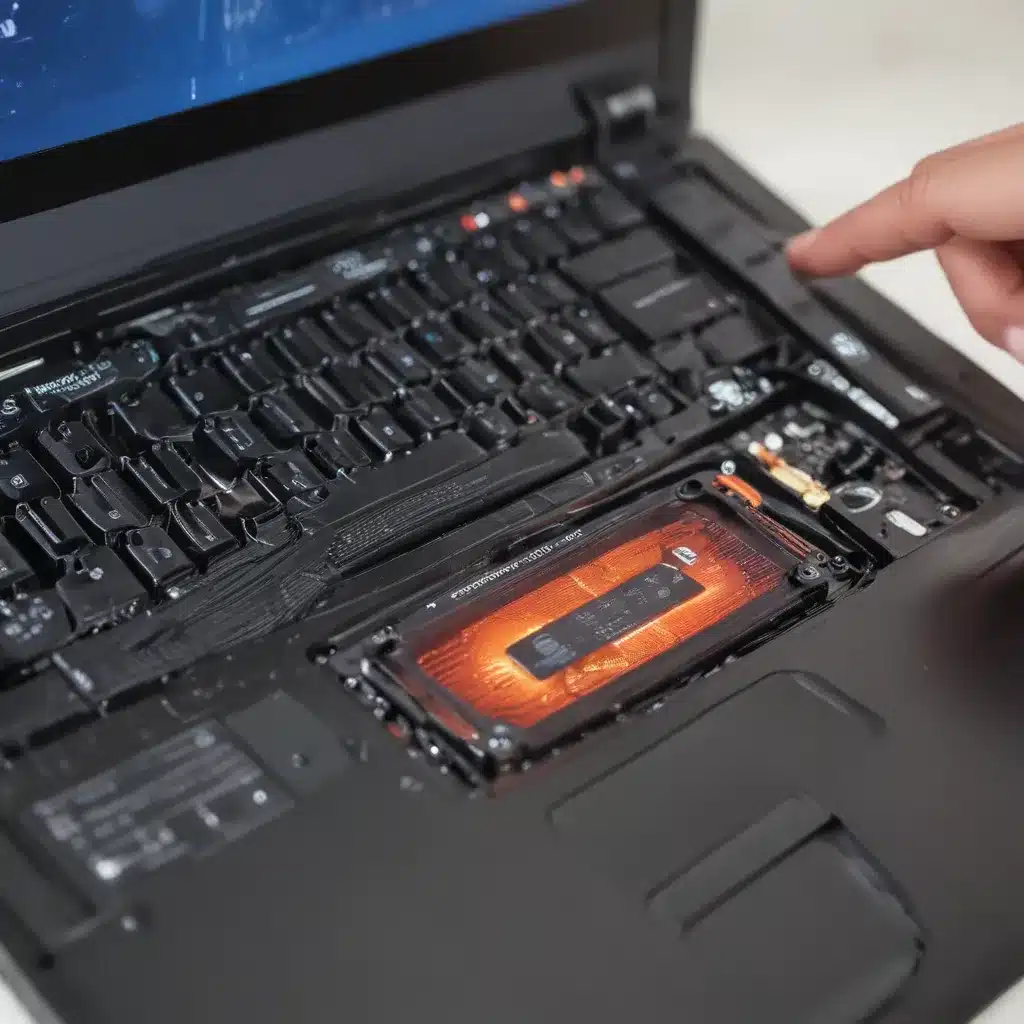Fixing Laptop Overheating and Cooling Issues
It’s a familiar scenario – you’re in the middle of an important task on your trusty laptop, when suddenly, the machine starts whirring like a jet engine. You feel the heat radiating through the chassis, and your once-snappy performance grinds to a halt. Yep, your laptop is overheating, and it’s not a pretty sight.
As someone who’s been there, done that, I know how frustrating and potentially damaging laptop overheating can be. But fear not, my fellow tech-savvy friends, because I’m here to share some tried-and-true tips to help you fix those pesky cooling issues and keep your laptop running cool, calm, and collected.
Identifying the Culprit: What’s Causing Your Laptop to Overheat?
Now, before we dive into the solutions, it’s crucial to understand what’s behind this overheating conundrum. According to the experts over at [1], there could be a few culprits at play:
- Blocked Airflow: If your laptop’s air vents are obstructed, the internal components can’t effectively dissipate the heat, leading to a toasty situation.
- Faulty Cooling Components: Issues with the laptop’s cooling fans or heat sinks can prevent proper heat management.
- Excessive Workload: Running multiple heavy-duty applications simultaneously can tax the processor and generate excessive heat.
- Outdated or Malfunctioning Software: Buggy software or drivers can cause your laptop to work harder than necessary, resulting in overheating.
- High Ambient Temperature: If you’re using your laptop in a hot environment, the cooling system may struggle to keep up.
Once you’ve identified the potential causes, it’s time to put on your problem-solving hat and start tackling those overheating woes.
Keeping Your Cool: Simple Fixes for Laptop Overheating
1. Unblock Those Vents!
The first line of defense against overheating is ensuring your laptop’s air vents are clear and unobstructed. As [2] suggests, avoid using your laptop on soft surfaces like your bed or lap, as these can easily block the vital airflow. Instead, opt for a hard, flat surface that allows for proper ventilation.
2. Crank Up the Cooling
If your laptop is still running hot, it might be time to invest in a nifty little accessory – a laptop cooling pad. As [3] explains, these handy devices come equipped with built-in fans that help draw cool air in and push the hot air out, effectively reducing your laptop’s temperature.
3. Dust, Dust, and More Dust
Over time, your laptop can accumulate a concerning amount of dust and debris, which can severely impede the cooling system’s efficiency. Grab a can of compressed air and gently blow out any dust bunnies lurking in those hard-to-reach nooks and crannies. Just be sure not to damage any delicate components in the process.
4. Monitor Those Temps
Keeping a close eye on your laptop’s temperature is crucial. Tools like [4]‘s Real Temp, GPU-Z, and HWMonitor can provide valuable insights into your machine’s internal thermometer, helping you identify any concerning trends before they become a major issue.
5. Tweak Those Power Settings
Did you know that adjusting your laptop’s power plan can have a significant impact on its temperature? As [3] suggests, switching to a power-saving mode or manually reducing the processor’s performance can go a long way in keeping the heat at bay.
Dive into the Deeper Fixes
If the basic troubleshooting steps haven’t done the trick, it might be time to get a bit more hands-on. Let’s explore some more advanced solutions:
1. Reapply That Thermal Paste
Over time, the thermal paste that helps transfer heat from your laptop’s processor to the cooling system can degrade and lose its effectiveness. Enlisting the help of a professional to replace this vital component can make a world of difference in keeping your laptop cool and composed.
2. Update Those Drivers and Software
Outdated or buggy software can be a sneaky culprit behind overheating issues. Make sure to keep your laptop’s operating system, drivers, and other critical software up-to-date to ensure optimal performance and efficient heat management.
3. Unleash the Power Troubleshooter
As [1] suggests, running the Windows Power Troubleshooter can sometimes uncover and resolve software-related problems that may be causing your laptop to overheat. It’s a quick and easy step that’s worth a shot.
Staying Cool, Calm, and Collected
Overheating laptops can be a real pain, but with the right troubleshooting techniques and a bit of elbow grease, you can keep your trusty machine running at its best. Remember, prevention is key – maintain a clean, well-ventilated workspace, and don’t hesitate to upgrade your cooling accessories or seek professional help if the issue persists.
By following the tips and tricks I’ve shared, you’ll be well on your way to conquering those pesky overheating problems and keeping your laptop running as cool as a cucumber. Happy computing, my tech-savvy friends!
[1] Knowledge from https://onsitego.com/blog/laptop-overheating-common-ways-fix-problems/
[2] Knowledge from https://www.quora.com/My-laptop-overheated-and-crashed-and-won-t-turn-back-on-will-try-again-later-it-smells-smokey-Will-it-ever-turn-back-on-even-after-I-leave-it-alone-to-cool-down
[3] Knowledge from https://www.reliancedigital.in/solutionbox/5-ways-to-deal-with-your-overheating-laptop/
[4] Knowledge from https://www.asurion.com/connect/tech-tips/laptop-overheating-causes-signs-and-how-to-fix/
[5] Knowledge from https://www.avast.com/c-fix-computer-overheating
[6] Knowledge from https://www.reddit.com/r/GamingLaptops/comments/13oikp5/gigabyte_g5_overheating/
[7] Knowledge from https://www.asus.com/support/faq/1015064/
[8] Knowledge from https://www.reddit.com/r/MSILaptops/comments/gsol69/fixing_overheating_issue_msi_gs66/













